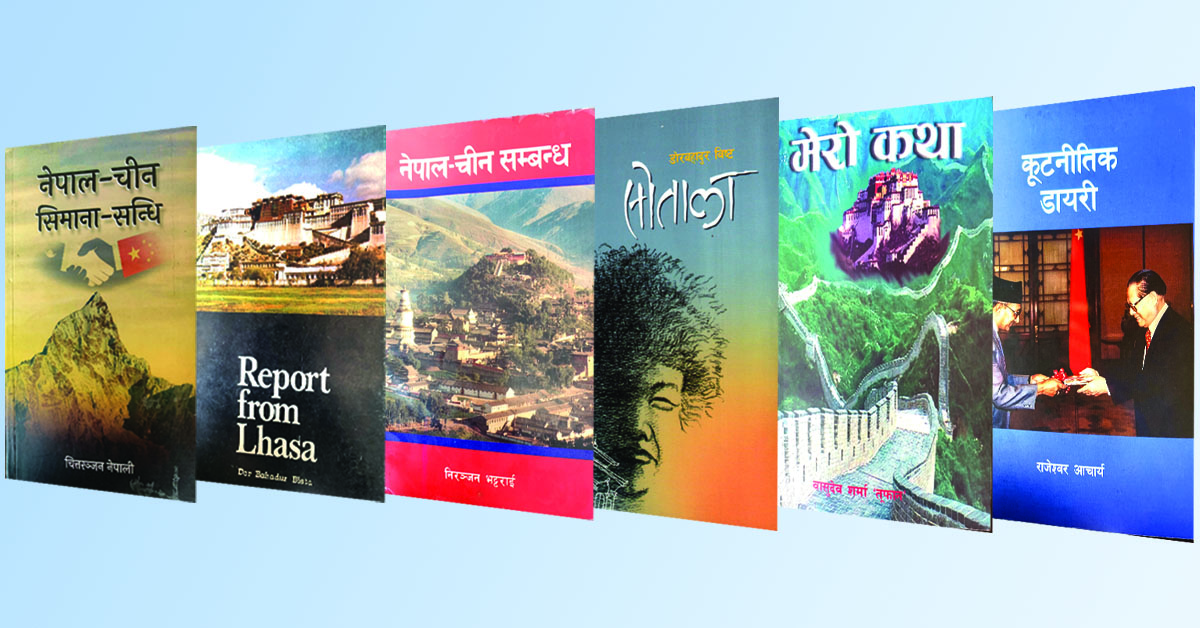
Nepal and China share a state-documented history dating back to the seventh century during the reign of Narendradev. The two countries share a border of around 1400 kilometers. Despite being connected by mountains and rivers, linguistic differences, for long, have acted as a barrier to communication, and for mutual understanding. As a global power, China has means and mechanisms to study a smaller neighbour like Nepal. For Nepal, however, understanding vast and complex China is a far greater task.
Over the years, attempts have been made by noted scholars, diplomats, and writers to bridge this gap through scholarly reflections, as well as through fiction. This article discusses six books focused on China, authored by former Nepali diplomats who served in China.
Sharma was the first Nepali to earn a master’s degree in Chinese Language and Literature from Peking University (1957-1964). In the book, he recounts Nepal’s outreach to China for salt, kerosene, and oil during 1971 and 1989 Indian blockades. He fondly recalls shaking hands with Chairman Mao, and greeting him in fluent Chinese, during Deputy PM and Foreign Minister Kirti Nidhi Bista’s visit in 1968. During his stay, he witnessed many historic firsts such as Nepali PM Tanka Prashad Acharya’s visit in 1956, state visit by first elected PM BP Koirala in 1960.
The book, published in 2005 by his wife Mangala Sharma, features many remarkable stories, including that of Chinese casualties during the construction of the Kodari Highway, King Birendra’s historic trans-Himalayan 1976 Chengdu flight, and a humorous anecdote about inconsistencies in the tiger whiskers on Nepal’s national flag.
Tuphan later joined the foreign service, serving in multiple roles in China — first as Second and then First Secretary at Nepal’s Embassy in Beijing (1970–75, 1981–85), and as Consul General in Lhasa (1978–80).
1. Sotala (Fiction)
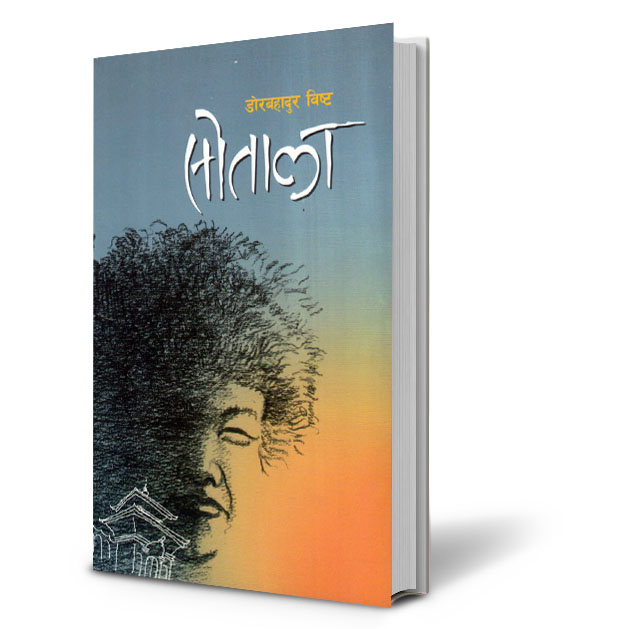
The only fictional work by a Nepali diplomat who served in China is Sotala, written by Professor Dor Bahadur Bista, Nepal’s sixth Consul General to Lhasa. Published in 1976, the story unfolds in a quadrilateral setting following the protagonist’s- Sanuman, a Lhasa-based Nepali trader- movements between Kathmandu-Lhasa-Kolkata-Kathmandu. The term ‘Sotala’ is the name given to Nepali traders by Tibetans.
The book delves into the political shifts of the 1950s, particularly Nepal’s budding democratic aspirations and Tibet’s evolving political landscape. As far as geoeconomics is concerned, the novel explores the immediate impact of the Tibet-Kalimpong border crossing on Nepal’s almost sole monopoly in trade with Tibet. The timeline stretches from the era of Prime Minister Chandra Shumsher Rana to the dawn of democracy in 1951. The timeframe of this story starts from Chandrashumsher Rana and ends with the dawn of democracy in 1951.
2. Report from Lhasa
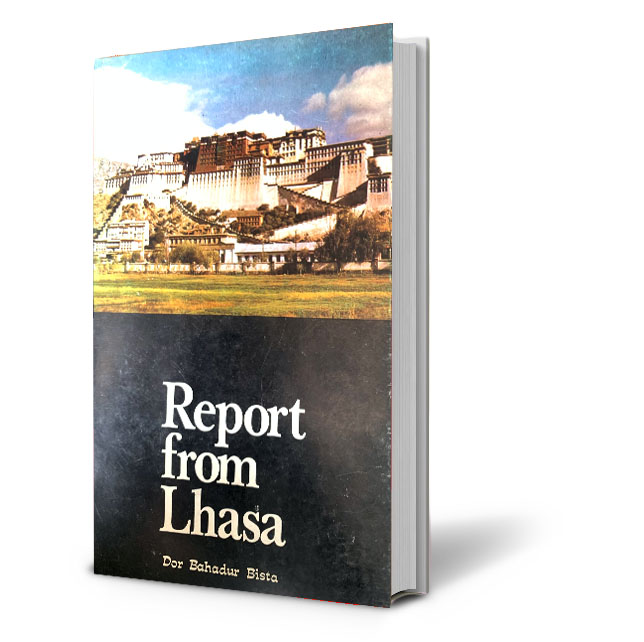
Report from Lhasa was a bestseller when published in 1979 B.S (circa 1922 A.D). Written by Professor Dor Bahadur Bista during his tenure as Nepal’s Consul General in Lhasa (1972–1975), the book recounts his personal and diplomatic experiences in Tibet, then amidst China’s Cultural Revolution.
In the prologue, Bista notes, ”Nepal, the only country allowed to maintain a foreign mission in Lhasa, is envied by many.” The book not only reports Tibet during the Mao-era ‘Cultural Revolution’, but also talks in length about China as a whole. Bista narrates stories of a Tibet where the mystic mantras of Buddhism had been replaced with Chairman Mao’s slogans.
In the chapter The Changing Face of Tibet, Bista reflects on the formidable challenge of building railway lines connecting Lhasa to the rest of China. “People often talk about possible railway connections from Lhasa to other major cities in eastern China with great enthusiasm, but the responsible authorities I met and talked with during my visit to Peking did not think it would come that easily.” Bista further notes that the challenge is not just the distance or technical difficulties involved, but also a matter of national priorities.
He also reminisces observations from official visits, such as King Birendra’s historic 1976 trans-Himalayan flight to Chengdu, and his 1973 state visit to China, which included a significant meeting with Chairman Mao.
3. Nepal-Chin Sambandha
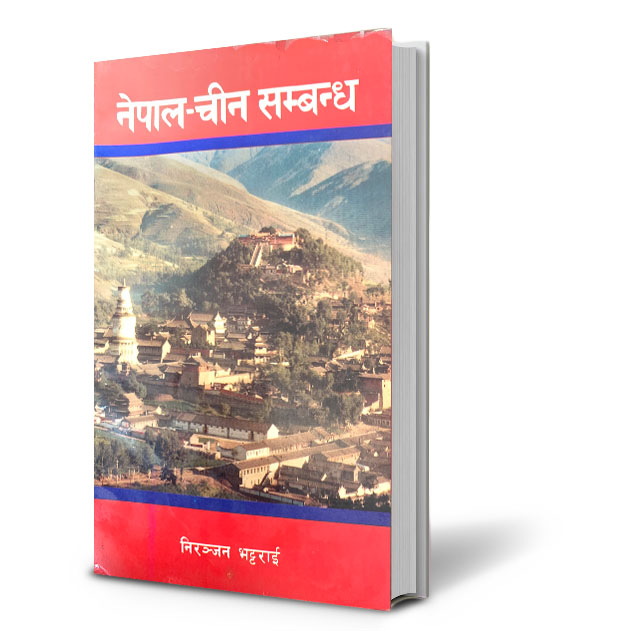
In Nepal-Chin Sambandha (Nepal-China Relations), Niranjan Bhattarai – who served as a First Secretary, Counsellor and Minister at Beijing’s Nepal embassy – outlines a long history of China and its ties with Nepal.
In one of the segments, Bhattarai writes about diplomatic exchanges between the two countries. According to the text, five Chinese ambassadors had traveled to Nepal from China while seven Nepali ambassadors went to China in that era. Bhattarai references cultural icons such as Buddhabhadra, Princess Bhrikuti, and Araniko, and avoids Romanized Chinese transliterations, reflecting his deep understanding of Mandarin.
From the Sun Yat-sen-led republican revolution to the founding of People’s Republic of China under Mao Zedong in 1949, Bhattarai traces the development of Sino-Nepal ties across eras. He also mentions an instance from 1942 where Nepal’s ambassador to India, Bahadurshumsher Rana, donated $10,000 to the then President of PRC Chiang Kai-shek, to rally support against Japanese aggression. He also highlights the diplomatic agreement inked on August 1, 1955, followed by subsequent high-level visits, which included Nepali Prime Minister Tanka Prasad Acharya’s trip to China in 1956 and Chinese Premier Zhou Enlai’s historic visit to Nepal in January 1957.
4. Kutnitik Diary
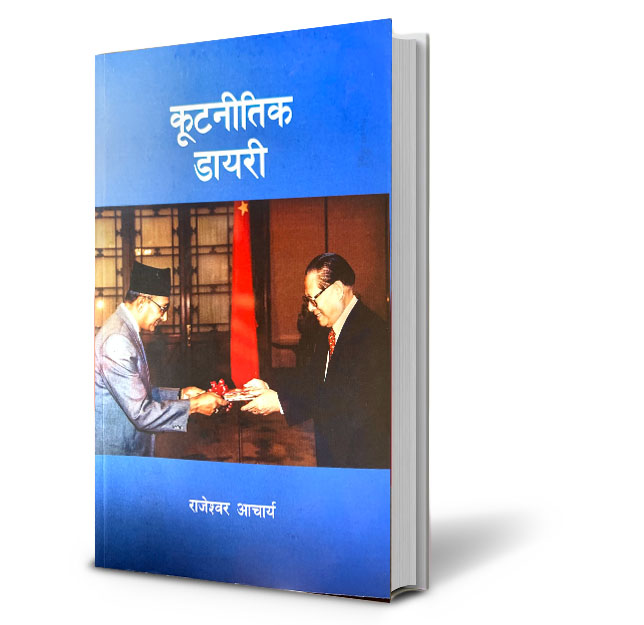
Ambassador Rajeshwor Acharya’s book ‘Kutnik Diary’ (Diplomatic Diary), published in 2013, includes his reflections and experiences from his time as Nepal’s ambassador to China October 1998- January 2003). During his tenure in China, two key events had transpired in both the countries – the 2001 Royal massacre, and Macao’s handover to China in 1999. Though the title of his book doesn’t explicitly mention China, it is primarily focused on Sino-Nepal relations as indicated by the cover picture featuring China’s then President Jiang Zemin receiving a letter of credential from Acharya on October 26, 1998.
In the book, published in 2013 by his wife Kamala Acharya, Acharya reflects on sensitive diplomatic issues, such as Tibet, Taiwan, and the Dalai Lama. He emphasizes that Nepal must be extra cautious while talking of these ‘three nos’ while engaging with China related issues, due to geopolitical complexities.
A particularly interesting anecdote from the book involves a Nepali speaking North Korean named Pake, who had studied the language while stationed in Kathmandu.
There are also references to Chinese officials raising concerns over Nepal’s engagements, and Indian diplomats showing undue interest in Nepal-China relations in the book.
About his unfulfilled potential Tibet tour, Acharya writes, “As suggested by my Chinese friends, I didn’t visit Tibet owing to my heart ailment.”
5. Mero Katha
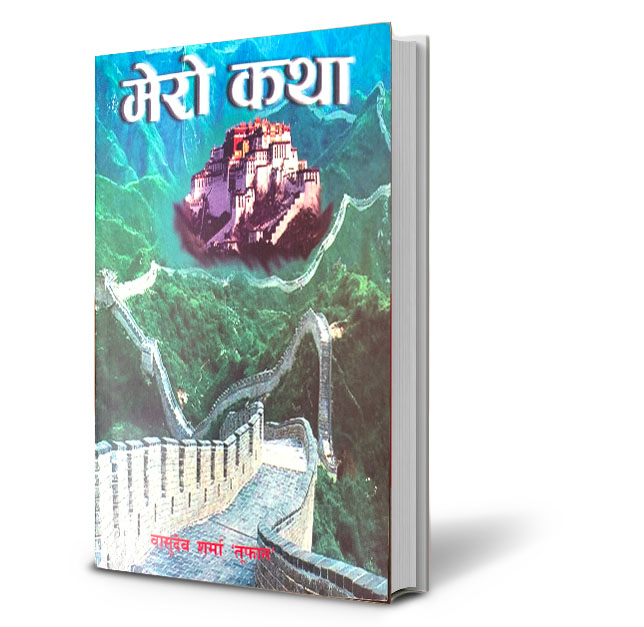
In his memoir Mero Katha (My Story), author Basudev Sharma ‘Tuphan’, details decades of his diplomatic and personal experiences in China — from his early days as a TB patient in 1956 to his multiple roles in Beijing and Lhasa.
Sharma was the first Nepali to earn a master’s degree in Chinese Language and Literature from Peking University (1957-1964). In the book, he recounts Nepal’s outreach to China for salt, kerosene, and oil during 1971 and 1989 Indian blockades. He fondly recalls shaking hands with Chairman Mao, and greeting him in fluent Chinese, during Deputy PM and Foreign Minister Kirti Nidhi Bista’s visit in 1968. During his stay, he witnessed many historic firsts such as Nepali PM Tanka Prashad Acharya’s visit in 1956, state visit by first elected PM BP Koirala in 1960.
The book, published in 2005 by his wife Mangala Sharma, features many remarkable stories, including that of Chinese casualties during the construction of the Kodari Highway, King Birendra’s historic trans-Himalayan 1976 Chengdu flight, and a humorous anecdote about inconsistencies in the tiger whiskers on Nepal’s national flag.
Tuphan later joined the foreign service, serving in multiple roles in China — first as Second and then First Secretary at Nepal’s Embassy in Beijing (1970–75, 1981–85), and as Consul General in Lhasa (1978–80).
6. Nepal-Chin Seemana Sandhi

Written by Narayan Prashad Rajbhandari (Chittaranjan Nepali), Nepal-Chin Seemana Sandhi (Nepal-China Border Treaty) was published by the then Panchayat Ministry. The book documents the work of the Nepal-China Joint Border Committee. The author, a Member-Secretary of Nepal-China Joint Border Committee, details negotiations between Nepal and China, leading to the historic October 5, 1961, border agreement.
Quoting Chinese PM Zhou Enlai, Rajbhadari highlights the resolving of Mt. Everest boundary issue, citing a 1960 press meet where Zhou acknowledged Nepal’s map as the accepted version, placing Mt. Everest on the shared border.